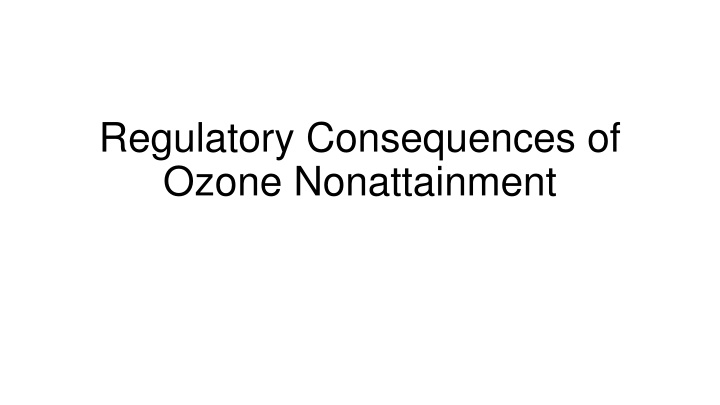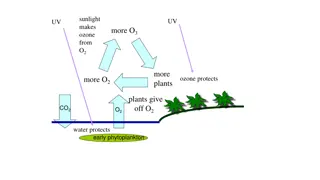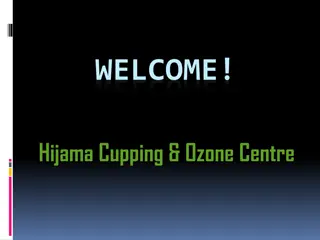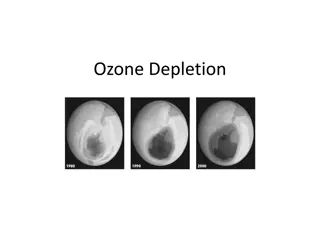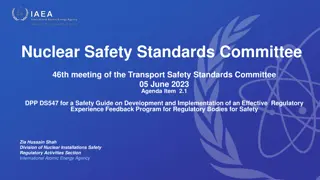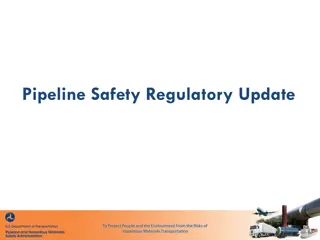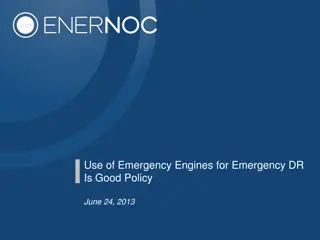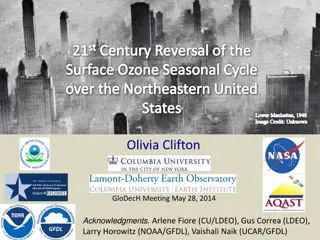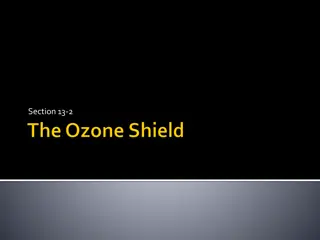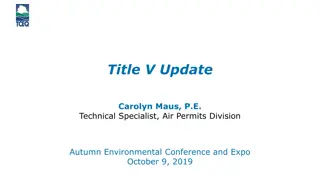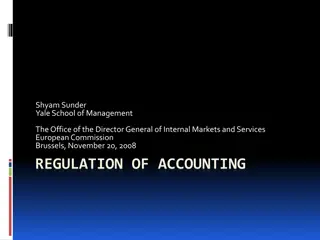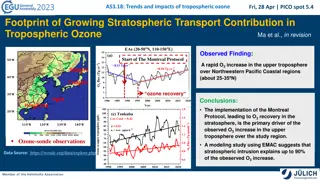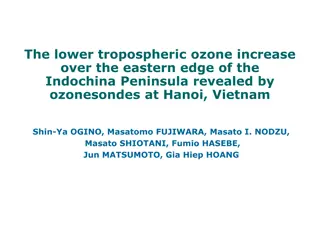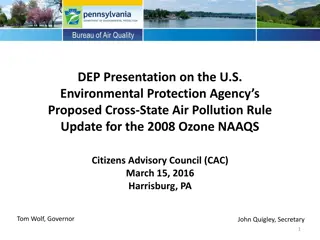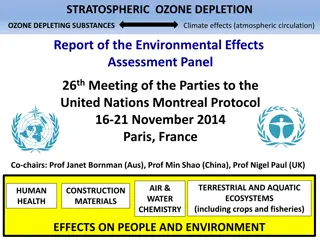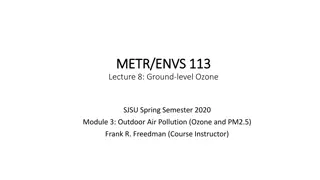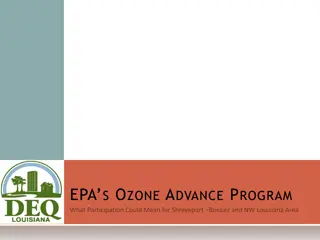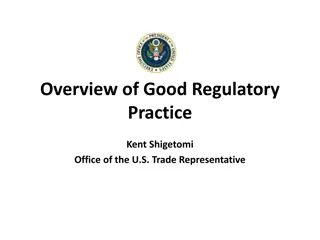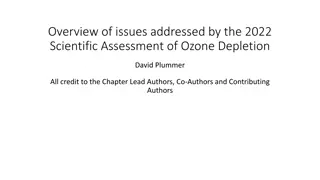Regulatory Consequences of Ozone Nonattainment
The Environmental Protection Agency (EPA) sets air quality standards to protect health and welfare. This article discusses the regulatory consequences of ozone nonattainment, including the Clean Air Act requirements for areas not meeting the standards. It explains the process of returning areas to attainment, controlling emissions, and the implications for different levels of nonattainment. The text also covers attainment dates, benefits of emission controls, and specific requirements for ozone nonattainment areas based on classification.
Download Presentation

Please find below an Image/Link to download the presentation.
The content on the website is provided AS IS for your information and personal use only. It may not be sold, licensed, or shared on other websites without obtaining consent from the author.If you encounter any issues during the download, it is possible that the publisher has removed the file from their server.
You are allowed to download the files provided on this website for personal or commercial use, subject to the condition that they are used lawfully. All files are the property of their respective owners.
The content on the website is provided AS IS for your information and personal use only. It may not be sold, licensed, or shared on other websites without obtaining consent from the author.
E N D
Presentation Transcript
Regulatory Consequences of Ozone Nonattainment
EPA Air Quality Standard for Ozone The Clean Air Act requires the Environmental Protection Agency (EPA) to set standards for air quality to protect health and welfare. In 2015, EPA set the ozone standard at 70 parts per billion (ppb). 3 years of air quality monitoring data used to determine if an area attains the standard. EPA designated the Uintah Basin as Marginal nonattainment in 2018. Includes Uintah and Duchesne Counties below 6250 feet of elevation. The Uintah Basin does not meet EPA s current (2015) air quality standard for ozone. 2
Clean Air Act Consequences of Nonattainment The Clean Air Act requires the area to return to attainment by implementing controls to reduce emissions. Utah Department of Air Quality (UDAQ) establishes requirements for state-controlled lands. Until EPA delegates authority to the Tribe, EPA establishes requirements for Tribal lands, with Tribal consultation. If an area fails to attain on time, EPA bumps it up to a higher nonattainment level, requiring more controls. The Clean Air Act defines the framework to bring the area into attainment. The State, Tribe, and EPA define the details to fulfill the requirements of the framework, 3
Attainment Dates and Possible Benefit of Controls to Reduce Emissions Attainment Date Benefit of Controls by Date Installed Years from Initial Designation 3 6 9 15 Attainment Determination Period, Years 2018 - 2020 2021 - 2023 2024 - 2026 2030 - 2032 Area Classification Marginal Moderate Serious Severe Date 8/3/2021 8/3/2024 8/3/2027 8/3/2033 Maximum Benefit 1/1/2018 1/1/2021 1/1/2024 1/1/2030 Any Benefit 1/1/2020 1/1/2023 1/1/2026 1/1/2032 Pink: It is too late to identify new controls that will provide a benefit by the date shown. Yellow: New controls identified now might have a benefit by the date shown. Green: New controls can provide a benefit by the date shown, if identified early enough. Considering the time needed to identify new controls, adopt regulations, and install controls, it may already be too late to identify new controls that will improve air quality at Moderate. Controls identified now will likely benefit air quality after a 2nd bump, to Serious. 4
Requirements for Ozone Nonattainment Areas Reasonable Further Progress (RFP) Emission Reductions Major Sources Additional Reasonably Available Control Technology (RACT) Air Permit Offset Ratio Area Attainment Demonstration Pollutant Amount More Classification Definition Marginal 100 Tons/Year 1.1:1 Sources 100 Tons/Year Sources 50 Tons/YearVOC and/or 15% of 2017 Emissions 3% of 2017 Emissions / Year 3% of 2017 Emissions / Year Moderate 100 Tons/Year 1.15:1 VOC Required Serious 50 Tons/Year 1.2:1 Required NOx Sources 25 Tons/YearVOC and/or Fees on Major Source VOC Severe 25 Tons/Year 1.3:1 Required NOx Green indicates requirements already in place and in effect. Pink indicates requirements that will need to be adopted and/or become effective. Successively higher nonattainment classifications require successively more emission controls. 15% Reduction in VOC at Moderate will be complex with 2 jurisdictions. Emission offsets are scarce - plugging and abandoning wells are main source. 5
Complexities of Uintah Basin SIP Uintah Basin Ozone Trend Scientific: Some aspects of winter ozone not nailed down. Local Regulatory: Two agency jurisdictions exist within one nonattainment area. Schedule: Each agency works on a different time frame. It s already too late to identify new regulations that will lower ozone after bump-up to Moderate. Federal Regulatory: EPA may lower the level of the ozone standard within a few years. 110 100 Uintah Basin Ozone 90 Ozone, ppb 80 70 Ozone Standard 60 50 2011 2012 2013 2014 2015 2016 2017 2018 2019 2020 Ozone values are averages of 4th high annual measured values for the 3-year periods ending in the year indicated. The Uintah Basin ozone is trending down, but EPA may lower the ozone standard in a few years, starting the cycle all over again. 6
Prepared and presented by: Marise Textor mltextor@globalessinc.com 832-454-3350 7
